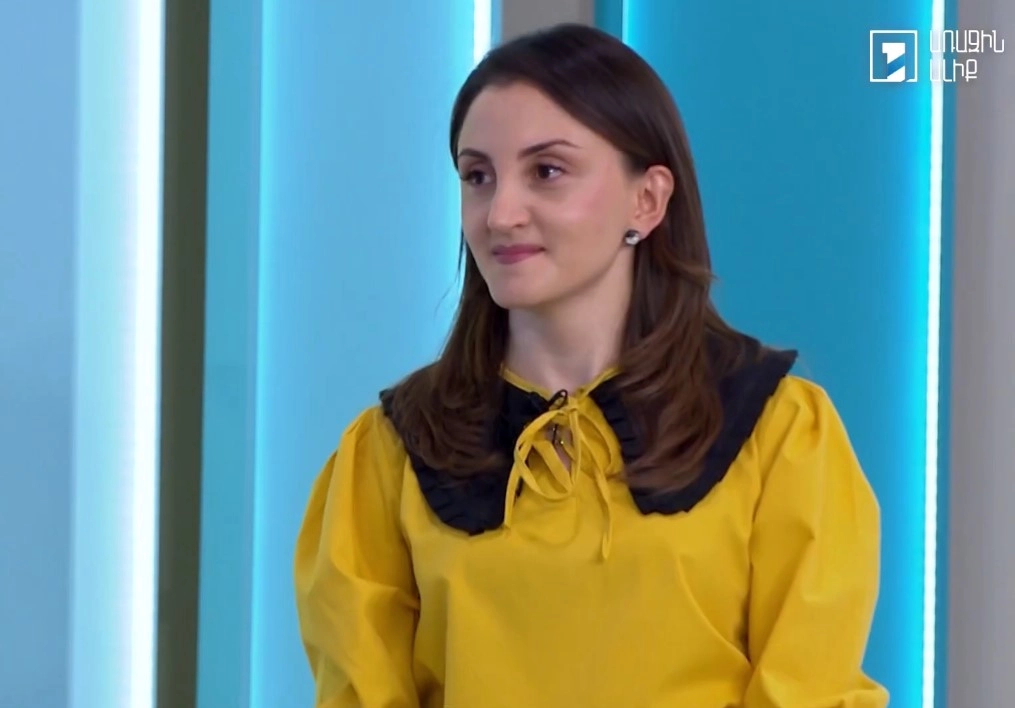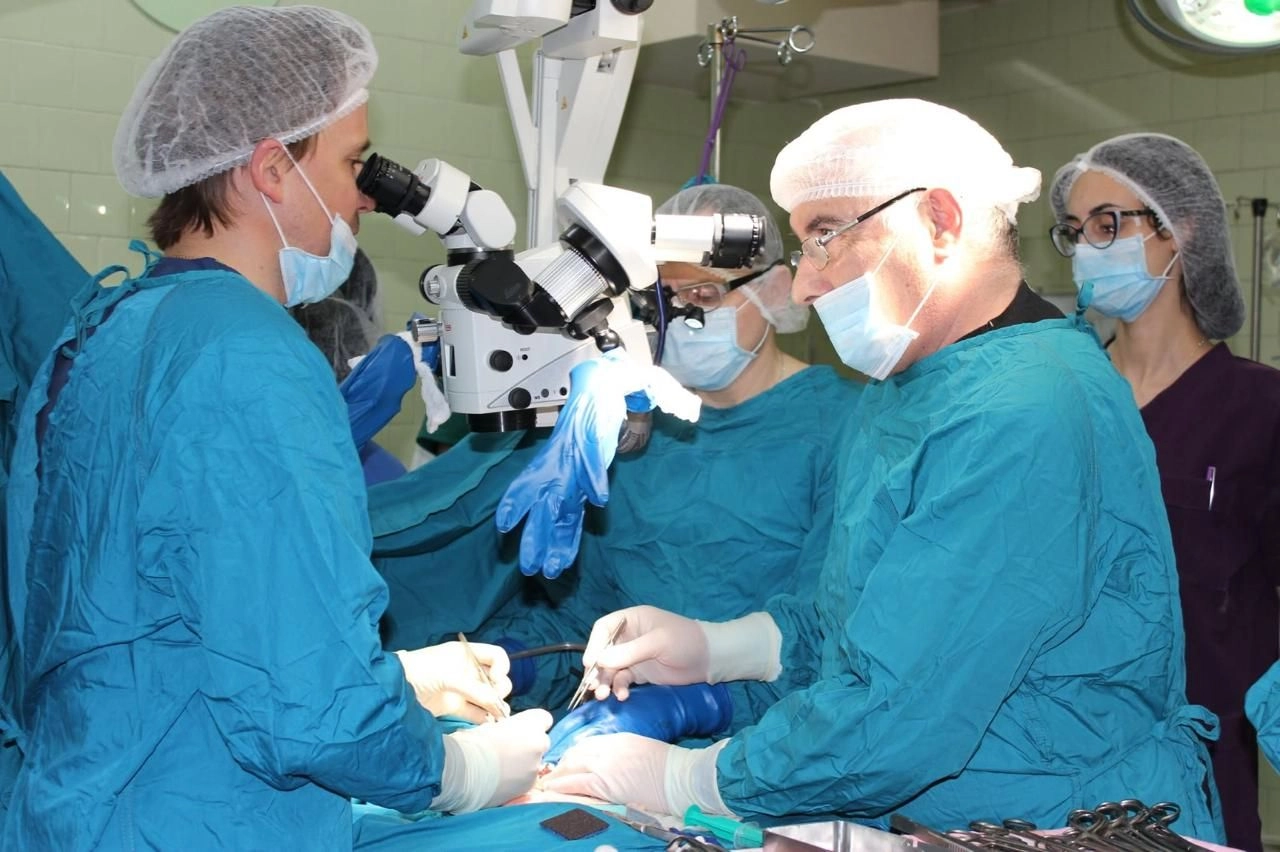News.am recently interviewed Professor Ara Babloyan regarding the newly established "Union of Medical Institutions of Armenia" Public Organization.
• Yesterday, information was published about the establishment of the "Union of Medical Institutions of Armenia" Public Organization. On June 19, the organization held its inaugural meeting, chaired by Professor Ara Babloyan. NEWS.am Medicine aimed to learn more about this new organization, including its origins, the motivation behind its creation, and its objectives.
Professor Babloyan, how did the idea of creating the "Union of Medical Institutions of Armenia" Public Organization come about?
In my view, the Armenian healthcare system has long needed such an organization. However, the idea first emerged during an extended consultation convened by Minister of Health Anahit Avanesyan. The meeting was held to present and discuss the comprehensive health insurance program. The minister sought the opinions of those directly involved in providing medical care and services.
During the meeting, while the general response from medical institution heads was positive, various questions and perspectives were raised, leading to a productive and meaningful discussion. It was during this exchange that the concept of forming an organization of medical institutions, drawing on international experience, was proposed. The goal was to create an entity that would actively collaborate with the Ministry to ensure the smooth implementation of this crucial project for our country.
What will be the status of the organization?
Initially, a group of initiators was formed to work on defining the organization's purpose, status, management principles, and statutes. The “Union of Medical Institutions of Armenia” Public Organization was registered following the established procedures. Its primary goal is to “support the development of medical institutions and enhance their operational efficiency to contribute to the advancement of the healthcare system in Armenia and the improvement of public health.”
On June 19, the organization held its inaugural extended session, during which several decisions were made to ensure the efficient operation and collaborative management of the organization.
The information indicated that the organization would have a large, expanded board and a five-member presidency. How was this determined, and on what basis?
First, it’s important to consider that Armenia has approximately 600 medical facilities, with about 21% providing inpatient services and 79% offering outpatient care. Additionally, 164 of these facilities are privately operated. All 600 organizations are eligible to become members of the union.
The organization’s secretariat is currently being established, and once complete, all medical institutions will be invited to join the organization.
The highest governing body of the organization is the General Meeting of its members. To ensure collegial management and representation of medical institutions of varying levels and statuses, the Council was approved with 37 members. From this Council, a five-member Presidency was formed. Each member of the Presidency will serve a one-year term in rotation.
Professor Babloyan, you chaired the first session, but you are not included in the published composition of the presidency. Are you a member of the Council?
I have chosen to serve as an advisor to the organization rather than as a member or president. I find it more meaningful to support and consult with my younger colleagues than to hold a formal leadership position.
Our organizational structure reflects a commitment to the collective good over personal interests. It demonstrates our ability to prioritize the health of the public and work together towards advancing our healthcare system.
What are the organization's current priorities?
Our primary focus is on health insurance, the licensing of specialists, and addressing the list of professions and associated educational reforms.
The challenges are numerous and varied, so we must collaborate closely with the Ministry of Health and various professional associations and healthcare organizations. I am confident that, with joint efforts, we will succeed.
About health

Union of Medical Institutions of Armenia26 June 24
Last news

Սպինալ մկանային ատրոֆիա. Բիայնա Սուխուդյան
19 December
Ի՞նչ է սպինալ մկանային ատրոֆիան, ինչպե՞ս է ախտորոշվում այս հիվանդությունը, ֆիզիոլոգիական ի՞նչ խնդիրների կարող է հանգեցնել: «Առողջ փոդքաստի» տաղավարում «Արաբկիր» բժշկական համալիրի նյարդաբանության և էպիլեպտոլոգիայի ծառայության ղեկավար, նյարդաբան Բիայնա Սուխուդյանը պատասխանել է սպինալ մկանային ատրոֆիային վերաբերող այս և այլ հարցերի:

Կարևոր ձեռքբերում
18 December
«Արաբկիր» բժշկական համալիրում իրականացված մանկական համակարգչային տոմոգրաֆիայի հետազոտությունների պրոտոկոլների պարամետրերի վերլուծության արդյունքում մեր ներկայացրած տվյալները МАГАТЭ-ի կողմից ճանաչվել են լավագույններից մեկը։ Սա հիմք է հանդիսացել միջազգային հեղինակավոր ամսագրում գիտական հոդվածի հրապարակման համար, որի համահեղինակ է «Արաբկիր» ԲՀ Ճառագայթային ախտորոշիչ ծառայության ղեկավար Մարինե Գրիգորյանը:

What Are the Most Common Allergens in Pediatrics?
10 December
Pediatrician Mary Marandyan of the Arabkir Medical Center was a guest on the Public Television Company’s “Be Healthy” program.

Իրավիճակը համաճարակային չէ, բայց մտահոգիչ է
09 December
Յուրաքանչյուր վիրուս կարող է առաջացնել բարդություններ: «Արաբկիր» ԲՀ երեխաների և դեռահասների առողջության ինստիտուտի ղեկավար Սերգեյ Սարգսյանը հորդորում է ինքնաբուժությամբ չզբաղվել և բարդություններից խուսափելու համար ախտանշանները նկատելու դեպքում դիմել մասնագետներին:

What Is an Allergy and What Is an Allergen?
08 December
Astghik Baghdasaryan, Head of the Respiratory Medicine and Allergology-Immunology Service at the Arabkir Medical Center, spoke about the nature of allergies and their triggers as part of the Public Television Company’s “Be Healthy” program.

The Healthcare Sector Has Suffered an Irreparable Loss
06 December
It is with profound sorrow and deep regret that we learned of the sudden passing of YSMU Honorary Professor Artavazd Bagrat Sahakyan, at the age of 72.
Professor Sahakyan was one of our most esteemed colleagues and a true friend of the Arabkir Medical Center. Over the years, we jointly implemented numerous programs and complex surgeries, including lifesaving liver transplants in children.
He was a beloved physician, a highly skilled specialist, a loyal and irreplaceable friend, and an honest and principled intellectual. He was a remarkable human being who undoubtedly still had many unfulfilled aspirations, both professionally and personally.
The Scientific Director of Arabkir Medical Center, Ara Babloyan, the Director, Arman Babloyan, and the entire medical staff extend their deepest condolences to his family, relatives, colleagues, friends, and to all who knew and valued his exceptional work.
The memory of a distinguished and dedicated doctor, a kind and sincere friend, and a bright, warm-hearted individual will forever remain in the hearts of those who had the honor of knowing him.

 English
English
 Հայերեն
Հայերեն Русский
Русский